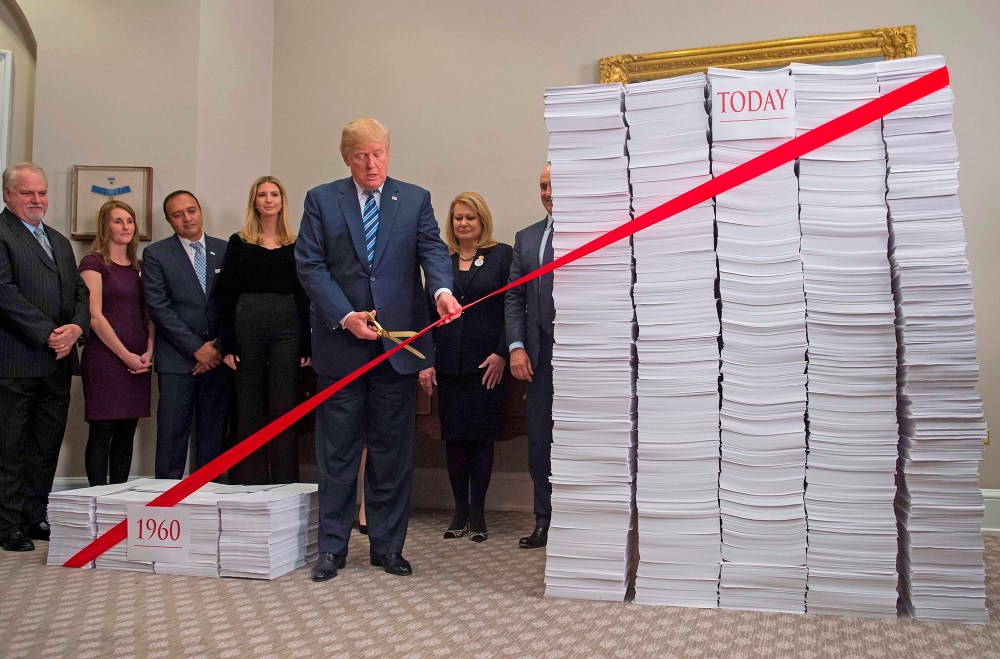President Donald Trump loves to talk about cutting red tape. In truth, he’s actually fine with tying the average American up in it.
Along with his GOP allies in Congress, Trump regularly bemoans the federal government’s allegedly onerous burdens on businesses, such as mandating that a bank ensure it has enough assets to avoid crashing the economy, say, or requiring a logging company to avoid killing an endangered species when working in critical habitats.
But when it comes to average Americans, the president and his allies in Congress are fine with making it harder to file your taxes, receive benefits, access government services or register to vote.
Consider a few recent examples:
• The Trump administration plans to end an IRS pilot program that allowed some taxpayers with simple returns to file their federal taxes online for free.
• In the megabill comprising much of Trump’s first-year agenda, House Republicans are moving ahead with new work requirements to qualify for health insurance through Medicaid.
• The Trump administration developed a plan (since rescinded) to require more Americans applying for Social Security to visit offices in person to prove their identities.
• Another Republican bill would require ID such as a passport or a birth certificate to register to vote (and a marriage certificate, too, if you’re a woman who changed her name).
This is needless box-checking, form-filling and drudgery that accomplishes nothing.
Let’s call this what it is: red tape — needless box-checking, form-filling and drudgery that accomplishes nothing except making it harder for Americans to get what they need.
Americans have long hated red tape. An AP-NORC poll in January found that 59% of adults said that “red tape, such as government regulations and bureaucracy,” is a major problem and 34% thought it was a minor problem. Only 6% thought it wasn’t a problem at all.
Republican presidents from Warren G. Harding to Ronald Reagan have campaigned on cutting federal spending and reducing regulations, but Trump has taken to the cause with abandon. In his first term, he posed in front of a giant stack of papers representing the growth in regulations since 1960 and symbolically cut a red ribbon with a pair of oversized gold scissors.
As was often the case in Trump’s first term, he didn’t succeed. One study from the libertarian Cato Institute found that whether you look at the total number of pages in the Code of Federal Regulations or the number of restrictions (as indicated by keywords), the upward trend in federal regulations plateaued, at best, during his first four years in office. By both counts, there was a slight increase from the last year of Barack Obama’s administration to the last year of Trump’s. Many of the latter’s administrative cuts were quickly undone by President Joe Biden.
A lot of this red-tape cutting was for the benefit of major corporations, however. Ironically, they’re the institutions most able to respond to new regulations, as they already have teams of lawyers, accountants and compliance officers at the ready to tackle the ever-changing requirements.













